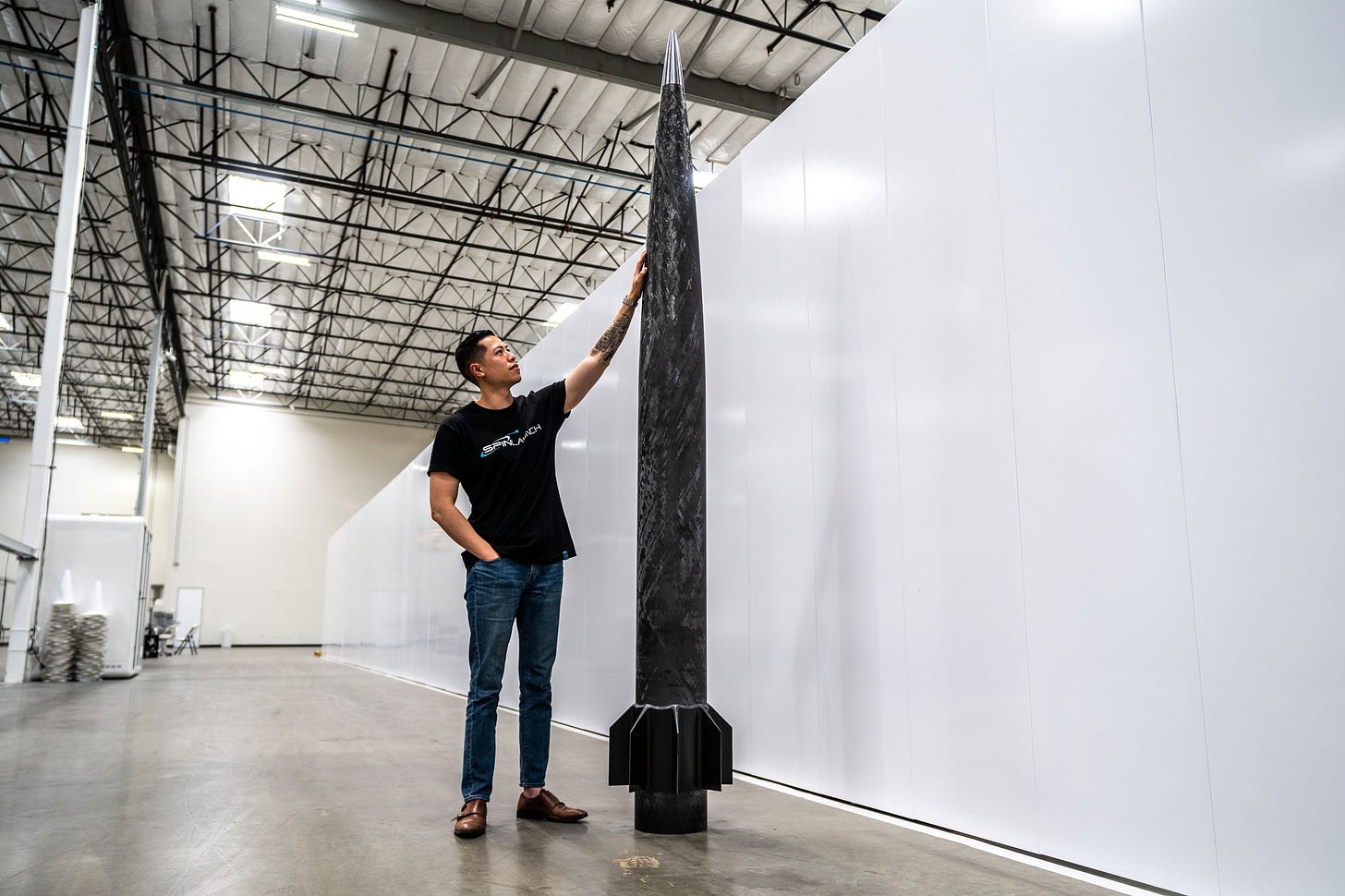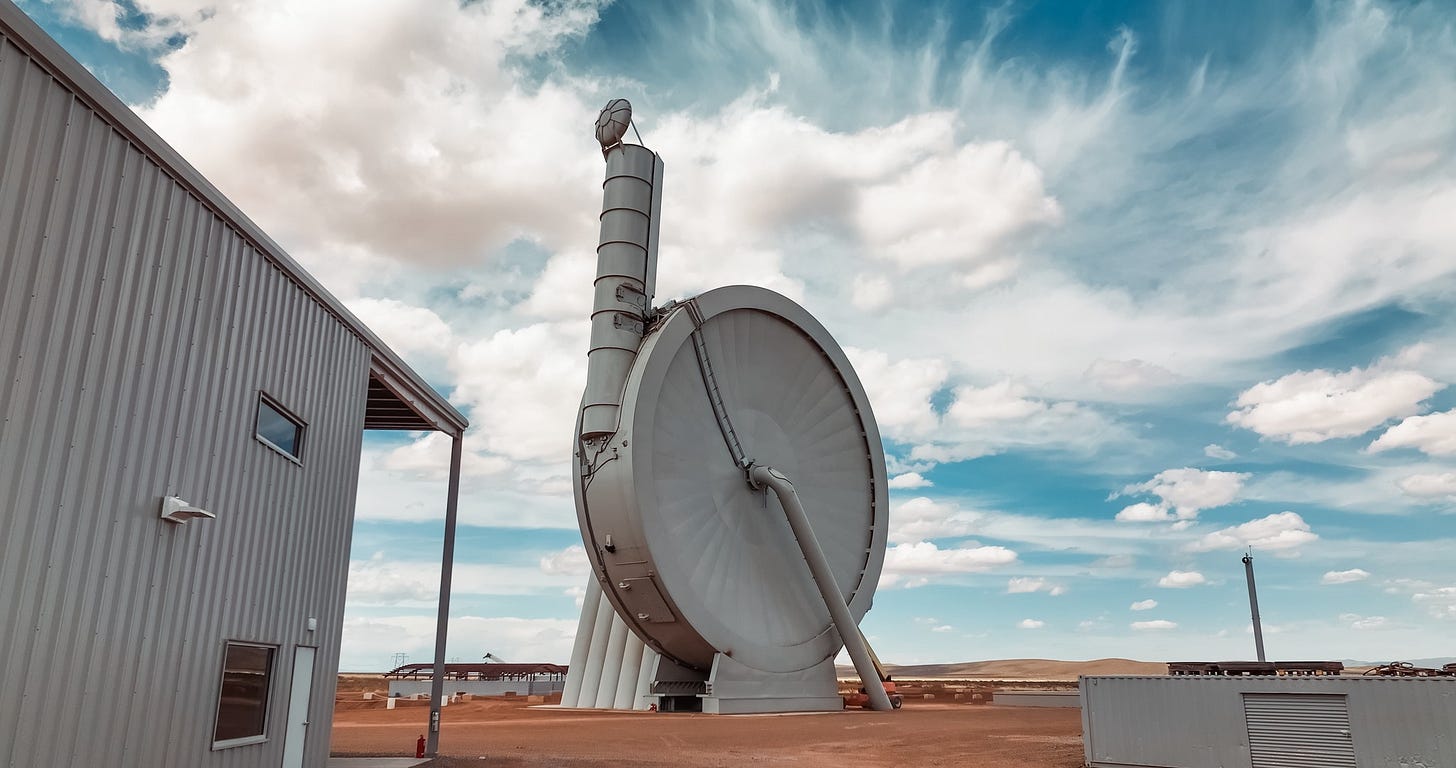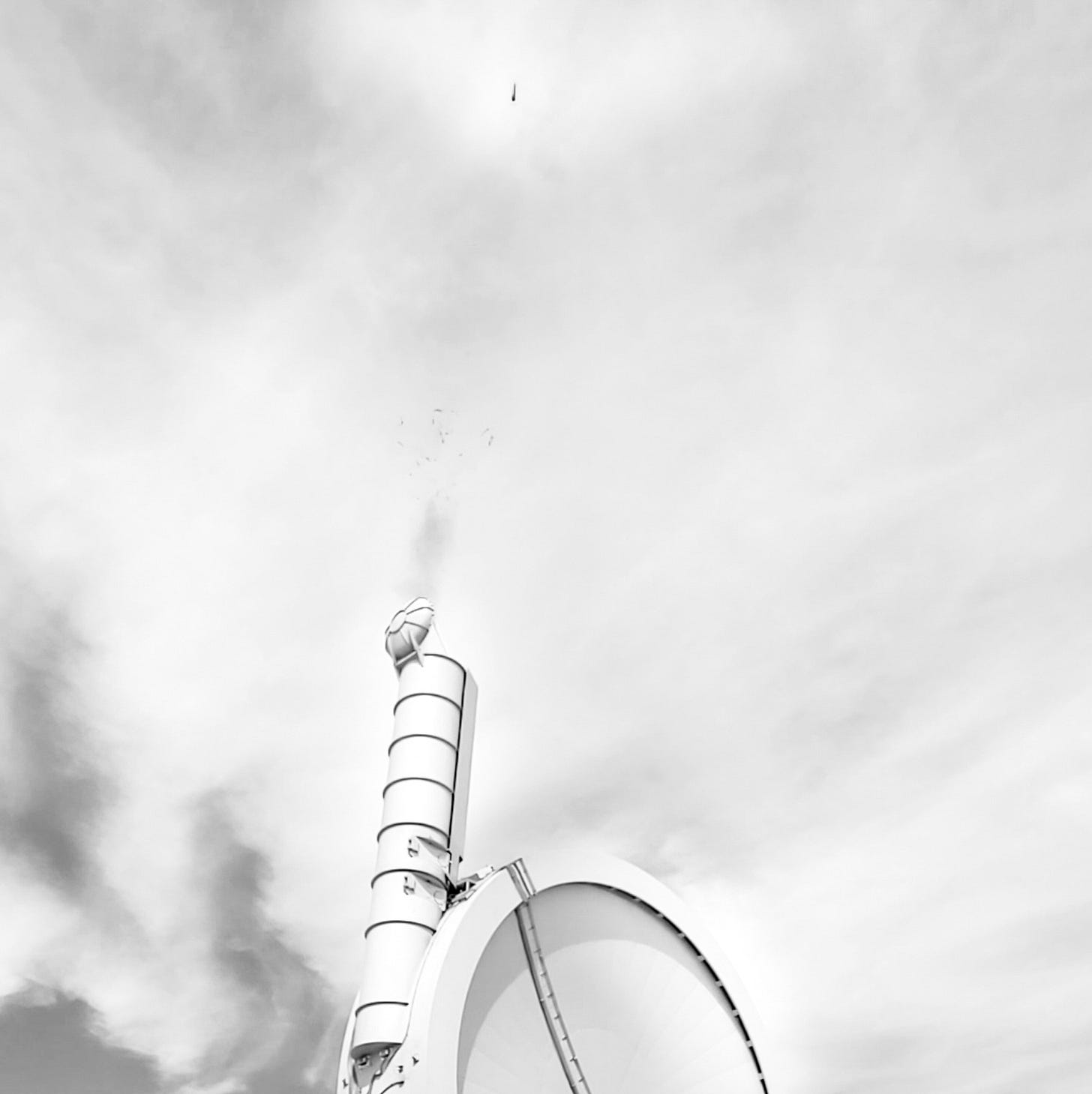
We are in a decade of Transportation Transformation. That's what Full Throttle explores. The newsletter will be delivered twice a week for free once you subscribe here. Follow me on Twitter, Instagram, and Linkedin.
This is a David and Goliath story. It's not just the story of smaller vs. bigger, it is also about the force David used to defeat his powerful opponent. What does this have to do with rockets and satellites? It’s about a small California company trying to grow, while defeating gravity with electricity and centripetal force.
Spin Launch recently won a NASA contract for its system of spinning a projectile and then slinging it toward the sky. Like David, Spin Launch, as their name suggests, uses the multiplying effect of the power of spinning an object faster and faster.
Spin Launch system at the Spaceport in New Mexico. (Credit: Spin Launch)
David used his arm and hand to spin his leather sling faster and faster until he released the stone at Goliath. Spin Launch uses the same physics to spin a projectile and then release it toward space. It worked, which is why NASA is spending a bit of money to see if this effort can work to send small satellites into low earth orbit (LEO).
5,000 MPH
The launcher is a 300 foot diameter disc shaped structure officially called the, "A-33 Suborbital Mass Accelerator." The company says it spits out a projectile at 5,000 mile per hour.

A launch vehicle at Spin Launch. (Credit: Spin Launch)
Spin launch calls its effort a “kinetic launch system” that can send 200kg-class satellites (440 lb) into space. The company says it can launch satellites that are “compatible with kinetic launch.” We’ll get back to that.
GRAVITY IS THE PROBLEM
The enemy of getting into space is gravity. Gravity is pushing on us, keeping us here on the good planet Earth. A lot of energy is needed to break that bond. That’s why we see big boosters, first-stages, for liftoff and to push a spacecraft toward space.

(Credit: Spin Launch)
Spin Launch’s business model is to eliminate the large first-stage chemical rocket by using its electric-powered “orbital accelerator.” A projectile is placed on the end of an arm that starts to spin similar to the force David used with his sling.
Once the projectile is spinning fast enough it is shot through a tube toward the heavens. All that energy only gets the vehicle so far. The hypersonic faring (the protective outer shell of the vehicle) is jettisoned and a rocket is fired for the final leg into LEO.
(Credit: Spin Launch)
This is not a new proposition. The Air Force was launching X-aircraft from “motherships” including the B-29 and the B-52 more than 60 years ago. The X-aircraft were “rocket planes” that dropped from the motherships and then fired their engines and headed to the edge of space and sometimes into space. The X-aircraft proved to US officials that man could travel to space.
ELIMINATING FIRST-STAGE ROCKETS
Virgin Galactic (VG) followed this model as a way to eliminate the first-stage. Using a 747, VG eliminates the first stage by getting to altitude and then releasing a small rocket with its payload to get into LEO.
Virgin Orbit video of its system to carry a rocket aloft on a Boeing 747 before releasing it for the final journey to space. (Credit: Virgin Orbit)
These efforts are about cutting costs to get to space. Big first-stage rockets are expensive. Spin Launch claims 70% of the cost of fuel and structures are eliminated in its system. The company's CEO Jonathan Yeney says the NASA development contract, "marks a key inflection point as SpinLaunch shifts focus from technology development to commercial offerings.”
There are plenty of critics of the Spin Launch model because the vehicle leaves the “spin cycle” at hypersonic speeds. Moving that quickly, through air, means friction. This is the “kinetic launch system.”

Spin Launch flight test. (Credit: Spin Launch)
Because the Spin Launch system is spitting out these projectiles at insane speeds, the satellites (inside the projectile) need to be able to deal with massive G’s on launch. This is why Spin Launch says it can only launch satellites that are, “compatible with kinetic launch.”
While some remain skeptical, Spin Launch hopes to prove it can use electricity and “David’s sling” to start delivering satellites for NASA. David would be proud.
(Cover photo credit: Spin Launch)




